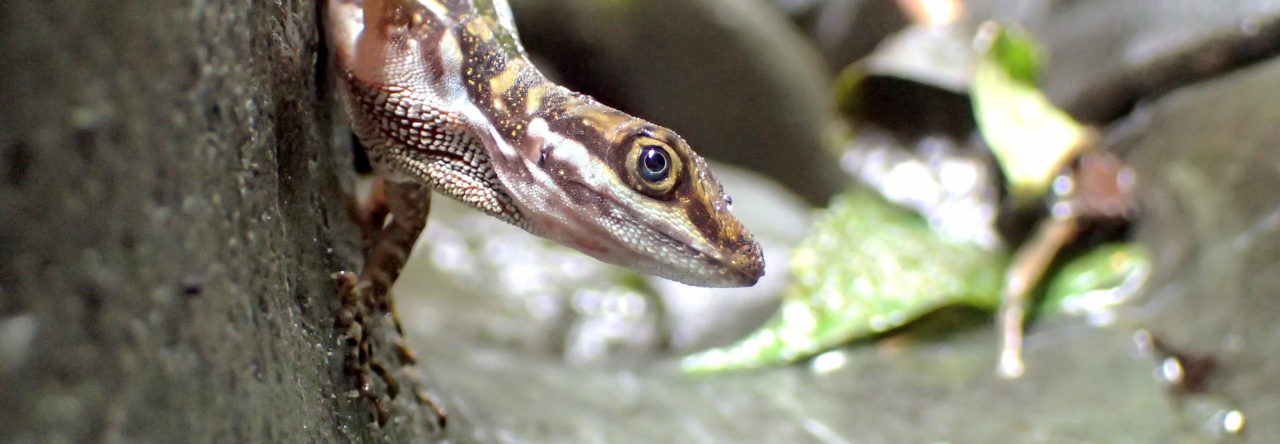
Anolis nebulosus
In a recent paper in the Italian Journal of Zoology, Senczuk and colleagues report an interesting finding on the clouded anole, Anolis nebulosus. On the mainland, the species is fairly petite, with males averaging 40 mm SVL. However, on a very small, offshore islet, only half a kilometer from the mainland, males grow to an average of 53 mm, and the average female is larger than the largest male on the mainland.
What is responsible for such great disparity in size? Two prime possibilities are that most of the anoles predators are absent from this small island and that the island has a seabird colony, which may lead to greater quantities of insect prey.
In a fascinating previous study, some of the authors of this paper documented many other interesting differences between the mainland and island populations, such as the fact that lizards in the island population are much more active and display more. Clearly, this is a situation worthy of further study.
Abstract:
The clouded anole Anolis nebulosus (Squamata: Polychrotidae) is widespread on the Pacific coast of Mexico. The species also inhabits Don Panchito, a small islet located near the coast of the Chamela-Cuixmala Biosphere Reserve in the state of Jalisco. We studied the extent of intraspecific differences in morphology (absolute size and body proportions) and in mtDNA sequences (16S and NDH2) between the population living on the islet (N = 18 for morphometry; N = 12 for mtDNA) and the one on the facing mainland (N = 38 for morphometry; N = 16 for mtDNA). The individuals on the islet are larger than those on the mainland with little overlap in size for either males (islet: 52.79 ± 1.82 mm; mainland: 40.96 ± 2.99 mm) or females (islet: 46.18 ± 3.24 mm; mainland 37.14 ± 2.13 mm). The presence of insular gigantism, as here found in A. nebulosus, seems uncommon in the genus and could be explained as a combination of low predation pressure and higher intraspecific competition on the island. Moreover, we found that sexual dimorphism (SD) is higher in the island population than in the mainland one. The molecular analysis shows the absence of shared haplotypes between the island and mainland populations. Ten mtDNA haplotypes belonged to the mainland population and three to the island population. The shape of the minimum spanning network and of the mismatch distribution indicates a single colonization event. These molecular data indicate a certain degree of isolation of the island population notwithstanding its proximity to the coast. The morphological characteristics of the anoles on Don Panchito match with the expectation of the so-called “reversed island syndrome” theory, which predicts an increased body size and sexual dimorphism in lizards living on very small islands characterized by unpredictable environmental conditions.
- Evolution in Real Time on Lizard Island - March 23, 2025
- Spider Snags Adult Anolis osa - March 22, 2025
- An Homage to the Green Anoles of New Orleans - March 21, 2025


Anthony Geneva
Ultimately, any interpretation of these differences relies on whether they are heritable. Any plans for a common garden experiment?
Yoel Stuart
In Mosquito Lagoon, the largest A. sagrei on record from the area are on an island that is a rookery.